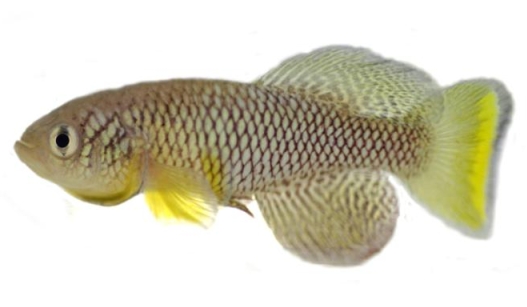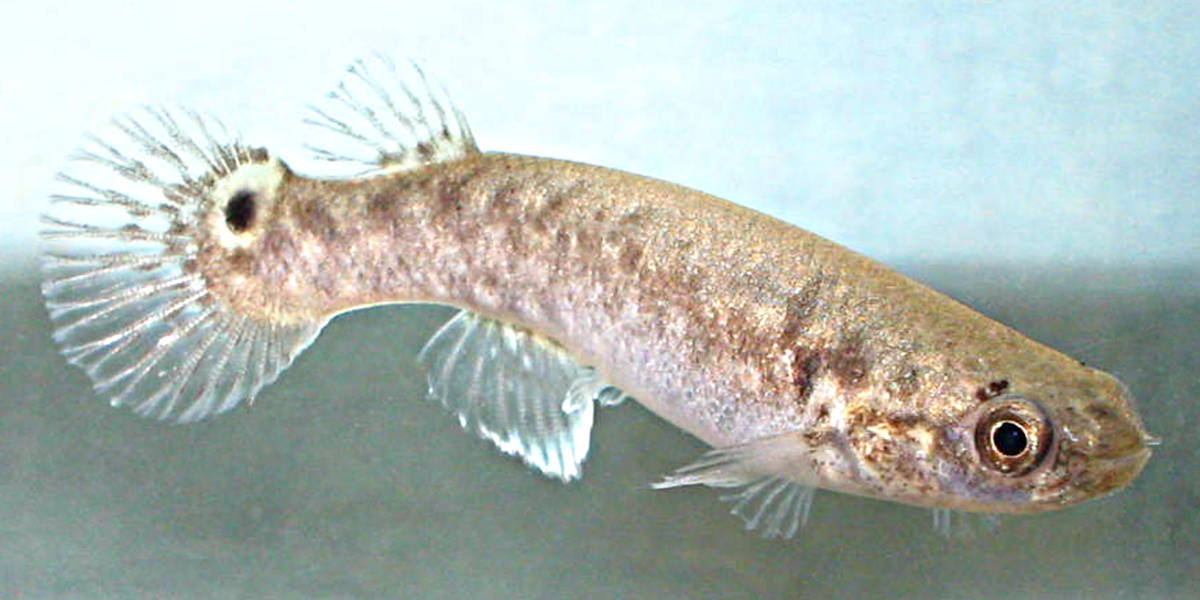The Shortest-Lived Vertebrate on Earth
Killifish - about 1270 species of order the Cyprinodontiformes - are, some may say, very ordinary looking fish of no significant size. They're just a few inches long, and while some of them are beautifully coloured, others are just... somewhat uninteresting.
But looks may be deceiving.
One thing's sad about these fish - they don't live long. They are one of the shortest-lived vertebrates in the world! Some of them only live for three months, and, in fact, one species, The African turquoise killifish (Nothobranchius furzeri), only lives for less than 12 weeks, making it the shortest-lived vertebrate on Earth.
Why is this so?
Some species live in deep waters, but others prefer shallow pools and puddles, which only exist during wet seasons. This made them evolve a quick way to mature and spawn before their habitat dries up. Also, thanks to these adaptations, several species can survive outside of water for up to 2 months. If that's not enough, some of them even forage on land!
As crazy as this sounds, these fish go to further extremes. Eggs survive in damp ground. Once they start developing, embryos can stop growing when times get hard. This is called embryonic diapause or suspended animation.
And if we talk about the mangrove killifish, well, there's a lot more unbelievable stuff going on in this fish's life.
Kryptolebias marmoratus is a hermaphrodite, which is the only vertebrate hermaphrodite which can fertilize itself. But don't think its sexual life is that simple: few male mangrove killifish exist. They have an intromittent organ which they use to fertilize hermaphrodites who behave as females... internally! Now you don't usually hear about fishes having penetrative sex, do you?
The mangrove killifish lives in mangrove forests, which is a harsh habitat. During the dry season, the water disappears and the fish are left to survive on land. That's not really a problem for this crazy fella - it can breathe and excrete waste through its skin, allowing it to survive mind-blowing 66 days without water. What's more! The fish is also a fantastic tail-flip jumper, and it often leaves water to hunt down terrestrial insects!
There's a lot more I could tell you about these incredible fishes, but let's just leave that for another day.

Photo credit: Ugau
| Common name: | African turquoise killifish |
| Scientific name: | Nothobranchius furzeri |
| Phylum: | Chordata |
| Class: | Actinopterygii |
| Order: | Cyprinodontiformes |
| Family: | Nothobranchiidae |
| IUCN status: | Least concern |
| Population trend: | Unknown |
| Scientific reading: |

Photo credit: Cardet co6cs
| Common name: | African turquoise killifish |
| Scientific name: | Kryptolebias marmoratus |
| Phylum: | Chordata |
| Class: | Actinopterygii |
| Order: | Cyprinodontiformes |
| Family: | Nothobranchiidae |
| IUCN status: | Least concern |
| Population trend: | Unknown |
| Scientific reading: |